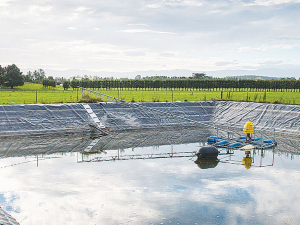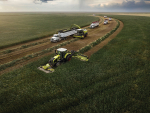However, it can also be a valuable resource that, when managed well, increases pasture production, and reduces fertiliser costs, says DairyNZ. It suggests ways to improve management of effluent on farm:
- Consider developing an effluent management plan. This is a handy tool for bringing together all effluent needs on a farm, includiing regional rule requirements, location of waterways, buffer exclusions, and system maintenance schedules.
- Spread effluent during appropriate soil conditions and at low-application rates to minimise nutrient loading, match plant requirements, and minimise ponding and runoff to waterways.
- This will also help reduce the N-surplus and therefore the nitrous oxide emitted from the soil.
- Test effluent regularly so that nutrient concentrations are known, and application rates can be adjusted.
- Use all effluent applications as a substitute for fertiliser applications, enabling reduced fertiliser on effluent application areas.
- Practice deferred effluent irrigation and store effluent during inappropriate soil conditions.
- Avoid storing effluent in anaerobic conditions, as this will increase methane emitted. Options to reduce this include stirring, covering, or adding treatments like polyferric sulphate.
- Ensure careful management of effluent from housing and stand-off pads due to volume created of both liquids and solids. Ensure that it doesn't lead to increased risk of nutrient loss and increased emissions from application and storage.
Critical Sources
Critical source areas are features in the landscape where water flows or accumulates, and there is a connection to waterways.
This includes point source discharges such as tile or mole drains.
- Identify critical source areas on your farm and their connection to waterways.
- Develop actions that reduce or mitigate contaminant loss through critical source areas such as:
- Excluding stock from critical source areas during times of high contaminant risk.
- Minimising effluent or fertiliser to critical source areas during high-risk periods.
- Retiring and planting areas to filter contaminants.
- Ensure stock crossings are bunded to prevent runoff and move gates and tracks away from waterways.
Reducing Erosion
Reduced erosion leads to improved grass growth and milk production. It enhances water quality and if planting is undertaken for erosion control, it can also provide shade and shelter for stock.
- Think about the suitability of each paddock for cultivation and assess the risk of soil erosion before work is undertaken, e.g. topography and soil type, proximity to waterways, and erosion susceptibility.
- Plan crop rotations and re-sowing to minimise the time that soils are bare, especially during the high-risk winter months.
- Use catch-crops to reduce contaminant loss to water and improve soil.
- Consider direct drilling, strip-tillage, or non-invasive tillage to reduce risk of contaminant loss.
- Manage or retire and plant erosion-prone land to minimise soil losses.
- Plan and prepare a winter grazing plan to minimise soil damage and erosion during the winter months. Select appropriate paddocks for intensive winter grazing that are away from waterways, 10° or less slope and are not vulnerable to pugging or erosion.
- Graze pastures and crops from top to bottom or strategically, to minimise sediment and contaminant loss to critical source areas and waterways.
















